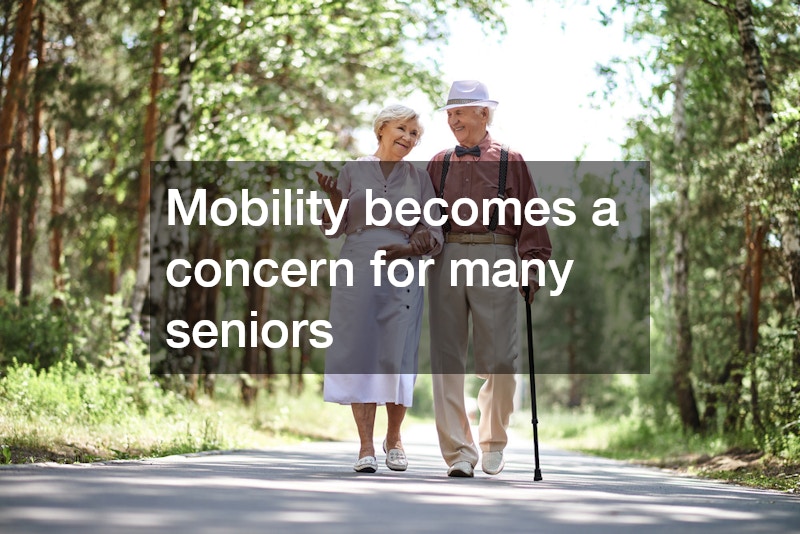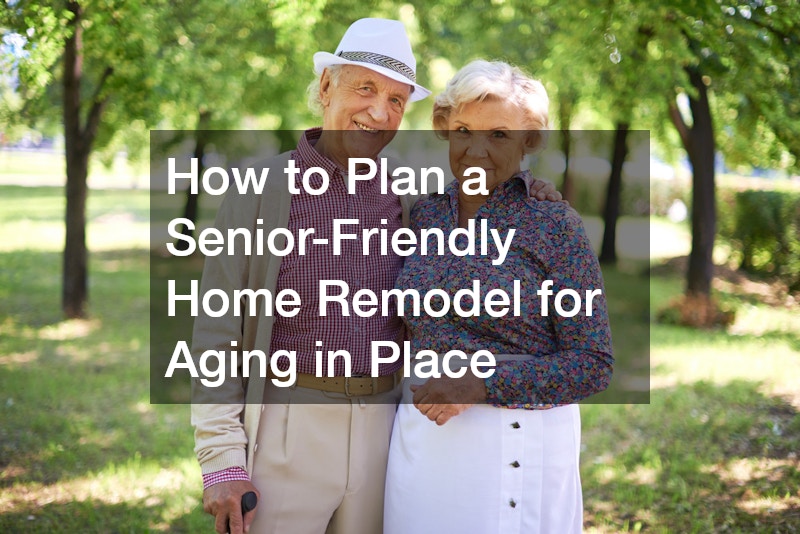Aging in place is an increasingly popular choice for seniors who wish to maintain independence and remain in their homes as they grow older. However, as physical needs change with age, a standard home may become less accommodating or even hazardous. A well-planned senior-friendly home remodel can address these challenges, ensuring safety, accessibility, and comfort while preserving the familiarity of the home.
This article explores practical steps and detailed strategies to design a senior-friendly home, covering indoor and outdoor spaces, essential comfort systems, roofing, landscaping, and accessibility features. By engaging experienced professionals and focusing on thoughtful modifications, you can transform a home into a supportive environment for aging in place.
1. Enhancing Accessibility Indoors and Outdoors
For seniors, mobility challenges often become a concern as they age, making it critical to eliminate physical barriers and create pathways that are not only accessible but also safe and convenient. Without proper modifications, a home can inadvertently become a source of accidents or daily frustrations. By focusing on accessible design both indoors and outdoors, homeowners can dramatically improve the quality of life for senior residents. The goal is to make navigation seamless while reducing the risks of falls, slips, and other accidents.

Ramps and Smooth Surfaces
- Collaborate with Residential Concrete Contractors: Ramps are a necessity for seniors who use wheelchairs or walkers or for those who simply struggle with stairs. Experienced residential concrete contractors can design and install ramps with gentle slopes that meet ADA (Americans with Disabilities Act) standards. These standards ensure the incline is manageable, offering seniors a safe alternative to steps without causing strain.
- Opt for Non-Slip Finishes: Concrete ramps and floors should be treated with non-slip finishes to enhance traction. This is especially important in areas prone to rain or snow, where slick surfaces increase the likelihood of falls. These finishes come in various textures that maintain aesthetic appeal while improving safety.
- Replace Uneven or Damaged Flooring: Indoors, cracked tiles, uneven hardwood, or worn-out carpets can pose tripping hazards. Replacing these surfaces with smooth, durable materials such as slip-resistant vinyl or engineered wood ensures seniors can navigate the space safely, even with assistive devices like walkers.
Driveways and Pathways
- Driveway Replacement and Repair: Aging driveways often develop cracks, potholes, or uneven surfaces that pose a tripping hazard. Driveway replacement and repair professionals can resurface or completely rebuild driveways, creating a smooth and level surface that is easier for seniors to traverse. Additionally, a well-maintained driveway makes it safer for emergency services to access the home if needed.
- Create Wide, Accessible Pathways: The pathways leading from the driveway to the home should be clear, wide, and even. Wide pathways accommodate mobility aids like walkers and wheelchairs, while a smooth surface reduces the risk of tripping over loose gravel or uneven pavers. Residential concrete contractors can help design these paths with accessibility in mind, ensuring they are both functional and visually appealing.
- Consider Lighting for Safety: Pathways should be well-lit to ensure visibility at night or during inclement weather. Solar-powered lights along driveways and walkways are a cost-effective way to illuminate outdoor spaces without adding to energy bills.
Accessible Entryways and Thresholds
- Lower Thresholds: Standard thresholds at doorways can be a stumbling block for seniors, especially those using mobility aids. Lowering thresholds or replacing them with flush entries eliminates this hazard. Flush thresholds are seamless with the flooring, allowing for smooth transitions between rooms or from the outdoors to the indoors.
- Install Handrails: Handrails on both sides of entryways provide much-needed stability for seniors. These rails should be sturdy, easy to grip, and placed at an accessible height. Handrails can also be installed alongside steps or small inclines for additional support.
- Upgrade Door Hardware: Traditional round doorknobs can be difficult for seniors to grip, particularly if they have arthritis or limited hand strength. Replacing these with lever-style handles offers a more ergonomic solution. Lever handles require minimal effort to operate and are compatible with most existing door mechanisms.
Additional Safety Tips for Accessibility
- Use Contrasting Colors: Indoors and outdoors, contrasting colors can help seniors with reduced vision easily distinguish steps, edges, or transitions between surfaces.
- Add Anti-Slip Mats: For areas that cannot be permanently treated with non-slip coatings, such as tiled porches or interior bathrooms, consider using anti-slip mats. These mats provide extra traction and can be easily removed for cleaning.
- Weatherproof Outdoor Surfaces: Ensure that outdoor concrete or stone surfaces are sealed and weatherproofed to prevent damage from the elements, which can lead to cracking or unevenness over time.
By addressing these key areas of accessibility, homeowners can make significant strides in creating a safer, more comfortable environment for seniors. Engaging skilled professionals, such as residential concrete contractors and driveway repair specialists, ensures these changes are both practical and durable, supporting the goal of aging in place with confidence and independence.
2. Upgrading Home Comfort Systems
A comfortable and functional home environment is vital for seniors aging in place. Temperature control, air quality, and reliable plumbing systems play a significant role in maintaining health, safety, and overall well-being. Seniors are particularly sensitive to temperature extremes and plumbing mishaps, so upgrading home comfort systems ensures that the home remains a safe and comfortable haven. This section explores how to optimize heating, cooling, and plumbing systems for a senior-friendly home.
Heating and Cooling Systems
Maintaining a stable indoor temperature is not just about comfort—it’s a matter of health and safety for seniors. Extreme heat or cold can lead to serious health issues, including heatstroke or hypothermia. Efficient heating and cooling systems are essential to mitigate these risks.
- Work with Heating and Air Service Professionals: Schedule a comprehensive HVAC assessment with experienced heating and air service providers. They can inspect, repair, or upgrade the system to ensure it operates efficiently and reliably, especially during extreme weather conditions.
- Invest in Energy-Efficient Systems: Modern HVAC systems are more energy-efficient and often come with smart technology. Smart thermostats allow homeowners to program temperature settings that remain consistent throughout the day, reducing energy costs while maintaining a comfortable environment.
- Improve Indoor Air Quality: Seniors with respiratory conditions or allergies benefit significantly from clean indoor air. Incorporate air purifiers into the HVAC system to filter out dust, allergens, and pollutants, creating a healthier living space.
- Regular Maintenance is Key: Preventative maintenance, such as cleaning filters, checking ducts, and inspecting insulation, helps ensure the system runs smoothly and prolongs its lifespan.

Plumbing and Drainage
Reliable plumbing systems are equally critical for a senior-friendly home. Leaks, clogs, and poorly designed fixtures can lead to safety hazards or inconveniences that disrupt daily life. Proactive maintenance and thoughtful upgrades can prevent these issues.
- Schedule Regular Drain Cleaning Service: Blocked drains can lead to water backups, flooding, and slippery surfaces, creating hazardous conditions. Engaging a professional drain cleaning service on a routine basis ensures that the drainage system remains clear and functional.
- Upgrade Plumbing Fixtures:
- Single-Lever Faucets: These are much easier to use than traditional two-handle faucets. Seniors with arthritis or limited hand strength can turn them on and off with minimal effort.
- Anti-Scald Valves: These valves regulate water temperature, preventing accidental burns. They are particularly important in bathrooms and kitchens, where hot water is frequently used.
- Install Senior-Friendly Bathroom Features:
- Walk-In Tubs: These tubs have doors that open to allow easy access, eliminating the need to step over high ledges. Many models also come with built-in seats, making bathing safer and more comfortable.
- Curb-Free Showers: Showers without raised edges allow seniors to enter and exit without stepping over barriers. Add grab bars and non-slip flooring to enhance safety further.
Additional Tips for Home Comfort System Upgrades
- Install Leak Detectors: Smart water leak detectors can alert homeowners to plumbing leaks before they cause significant damage. This is particularly useful in reducing the risk of water-related accidents.
- Water Pressure Adjustment: Too much water pressure can damage pipes over time, while low pressure can be frustrating. Adjust the water pressure to a senior-friendly level to balance efficiency and convenience.
- Insulate Plumbing for Winter: Frozen pipes can burst, causing costly damage. Insulating pipes, especially in colder climates, prevents freezing and ensures a reliable water supply.
Upgrading home comfort systems with the help of heating and air service professionals and skilled drain cleaning service providers not only improves functionality but also enhances safety and health for seniors. These changes ensure that the home remains a supportive, efficient, and comfortable environment for aging in place.
3. Ensuring Roof Safety and Maintenance
A well-maintained roof is critical to the safety and longevity of any home. For seniors, addressing roofing issues promptly is essential to prevent hazards like water leaks and structural damage. This section emphasizes the importance of professional roofing services and proper maintenance.
Roof Repairs and Maintenance:
- Hire local roofers to conduct regular inspections and repair any damage. A small roofing leak can quickly escalate into a serious issue if not addressed promptly.
- Opt for durable roofing materials such as metal or asphalt shingles, which are resistant to weathering and require less frequent repairs.
- Ensure proper attic ventilation to reduce moisture buildup, which can lead to mold—a significant health risk for seniors.
Gutter and Drainage Systems:
- Clean gutters regularly to prevent water overflow that may damage the home’s foundation or create slippery walkways.
- Consider installing gutter guards to minimize maintenance needs, making the home safer and easier to maintain.
4. Designing Senior-Friendly Outdoor Spaces
Spending time outdoors has significant physical and mental health benefits, particularly for seniors. A well-designed outdoor space encourages light exercise, relaxation, and connection with nature, all of which are essential for maintaining a high quality of life. However, outdoor areas can pose safety risks without proper planning. By prioritizing safe pathways, manageable landscaping, and accessible relaxation areas, homeowners can transform outdoor spaces into havens of safety and comfort for seniors.
Landscaping for Safety
Landscaping is about more than aesthetics when it comes to senior-friendly design—it’s about creating an environment that is as functional as it is beautiful. Proper planning minimizes risks and maximizes ease of use.
- Collaborate with Landscape Designers: Professional landscape designers can craft gardens and yards that are both low-maintenance and safe. They consider factors like pathway design, plant selection, and functional layouts to create spaces seniors can enjoy without stress.
- Install Well-Lit Pathways: Pathways should be equipped with adequate lighting, especially along driveways and leading to entrances. Solar-powered or motion-activated lights can provide cost-effective illumination while reducing energy consumption.
- Choose Non-Slip Materials: Non-slip surfaces for walkways and patios are crucial for preventing accidents, especially in wet conditions. Materials like textured concrete or slip-resistant pavers offer better traction than standard surfaces.
- Select Drought-Tolerant Plants: Native, drought-tolerant plants reduce the need for watering and maintenance, making the garden easier to care for. This approach not only lightens the workload for seniors but also contributes to sustainable landscaping practices.
Tree Maintenance
Trees are valuable assets to any yard, providing shade and enhancing curb appeal, but they can also present hazards if not properly maintained. Regular tree care ensures they remain safe and beneficial features.
- Engage a Tree Service: Professionals can assess the health of trees and remove any dead or overhanging branches that might fall and cause injury or damage. Proactive maintenance prevents accidents before they happen.
- Address Root Hazards: Tree roots can lift walkways or disrupt driveways, creating tripping hazards or uneven surfaces. A tree service can trim roots strategically or recommend planting trees with non-invasive root systems.
- Prevent Overgrowth: Trim trees regularly to ensure they don’t obstruct pathways, windows, or roofs. Overhanging branches near the roof can also lead to issues like clogged gutters or a roofing leak during storms.
Outdoor Relaxation Areas
Relaxation areas give seniors a comfortable space to unwind and enjoy their surroundings. These areas should prioritize accessibility, comfort, and safety.
- Install Raised Garden Beds: Raised garden beds allow seniors to continue gardening without the need to bend or kneel. These beds should be at a height that is accessible for both standing and seated users, making gardening a more enjoyable and less strenuous activity.
- Add Shaded Seating Areas: Comfortable, weather-resistant seating placed under shade structures like pergolas or umbrellas encourages seniors to spend more time outdoors. Shaded areas protect against overexposure to the sun, reducing the risk of heat-related health issues.
- Ensure Accessibility: Design outdoor spaces with ramps and wide pathways to accommodate wheelchairs and walkers. Smooth transitions between different outdoor areas, such as patios and lawns, prevent tripping hazards.
- Incorporate Anti-Glare Surfaces: Use materials for seating and tables that don’t reflect sunlight excessively, ensuring a comfortable experience during bright days.
Additional Considerations for Outdoor Safety and Comfort
- Install Handrails: In areas with steps or small inclines, handrails provide additional stability for seniors.
- Avoid Sharp-Edged Plants: Choose plants without thorns or sharp edges to reduce the risk of accidental injury.
- Set Up Easy-to-Reach Storage: Outdoor storage for tools or gardening supplies should be accessible without requiring bending or climbing.
5. Incorporating Accessibility Features and Assistive Technology
Accessibility is at the heart of any senior-friendly remodel. By working with disability services and integrating assistive technology, homeowners can create a space that meets the specific needs of aging residents.
Consulting Disability Services:
- Seek advice from a disability service to identify key areas of the home that require modifications, such as grab bars in bathrooms or stairlifts for multi-story homes.
- Use their expertise to ensure modifications comply with accessibility standards, enhancing safety and ease of use.
- Consider installing height-adjustable countertops, cabinets, and appliances to improve usability for seniors.
Smart Home Technology:
- Install smart thermostats and lighting controls, which allow seniors to adjust settings without leaving their seats.
- Explore voice-activated assistants for tasks like turning on lights, locking doors, or setting reminders.
- Integrate fall-detection systems that can alert emergency services in case of accidents.
Home Remodel Customizations:
- Convert traditional bathtubs into walk-in showers with grab bars and non-slip flooring.
- Add stairlifts or elevators for multi-story homes to reduce the risk of falls.
- Install lever-style door handles and rocker light switches, which are easier for individuals with arthritis or limited hand strength to use.
Conclusion
Planning a senior-friendly home remodel requires careful consideration of safety, comfort, and accessibility. By addressing indoor and outdoor spaces, upgrading essential systems, ensuring roof safety, and incorporating assistive technology, homeowners can create an environment that supports aging in place.
The collaborative effort of residential concrete contractors, local roofers, landscape designers, and disability services is crucial in achieving this transformation. By prioritizing these modifications, seniors can enjoy a safe, comfortable, and independent lifestyle in their homes for years to come.








